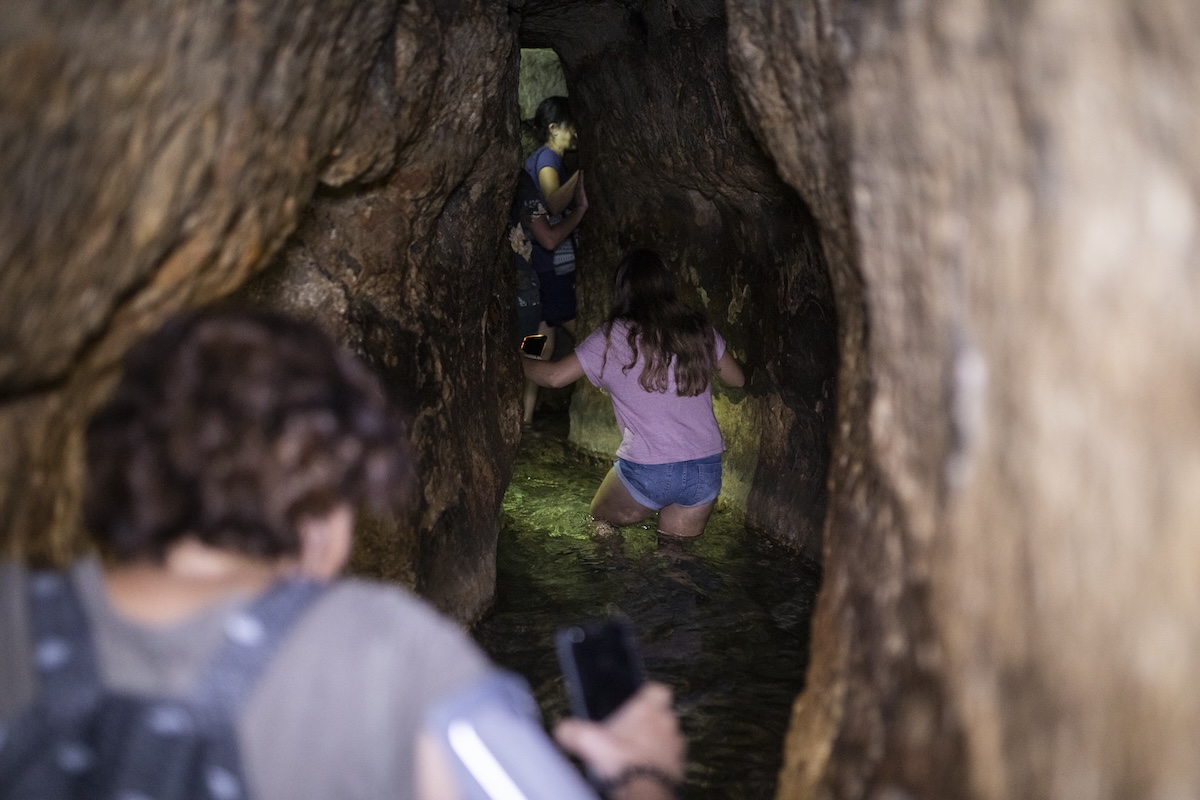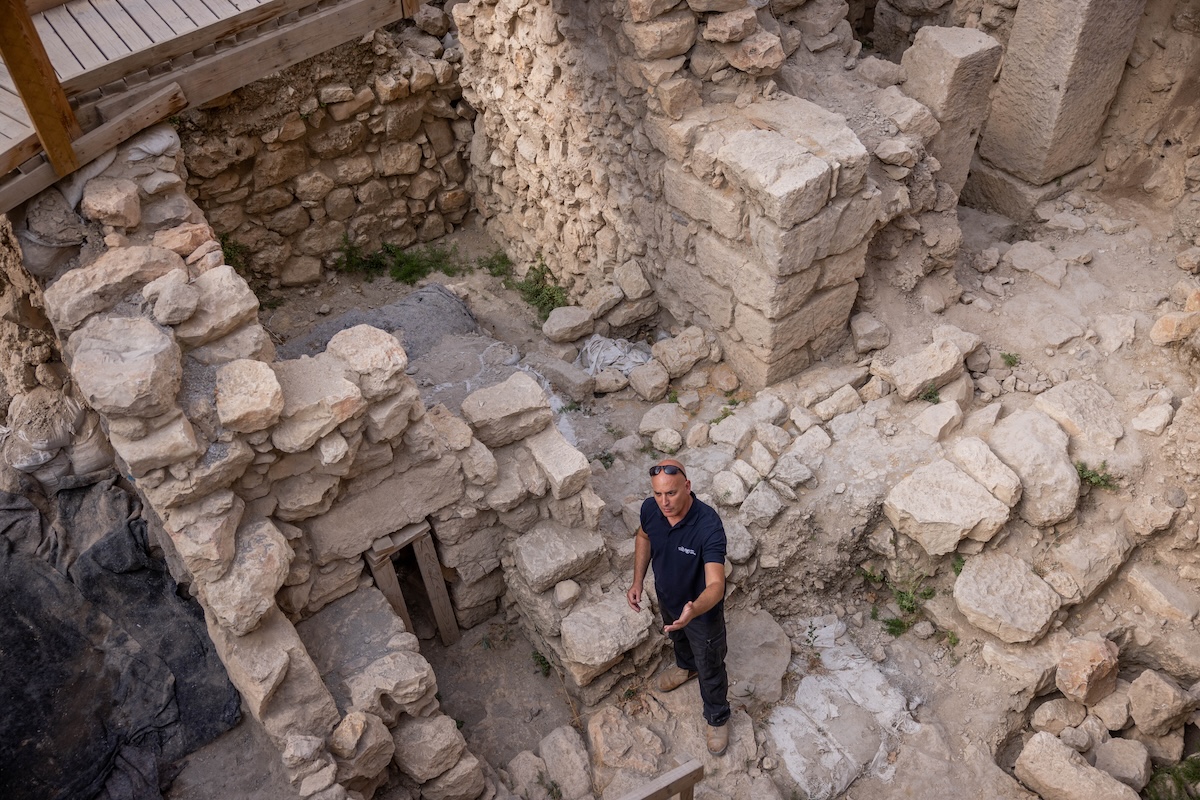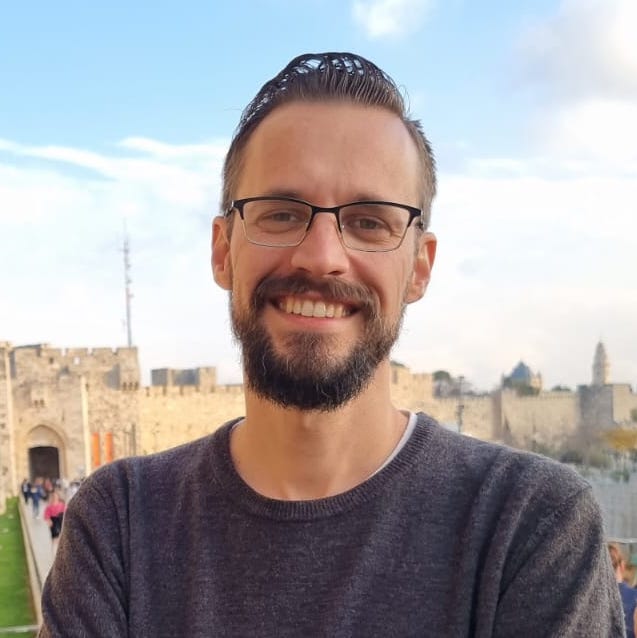Biblical sites represent Israel's largest archaeological discoveries - Exploring the City of David
Part 2 in a series

Israel is filled with archaeological sites from the times of the Bible, many of which are only partly excavated. We can assume that many have not been discovered yet, and others never will be. Nevertheless, the sites we know about still have enough ‘unexcavated’ material to keep archaeologists busy for another century, at least.
In this series, we are examining some of the most important archaeological sites in Israel and learn a bit about the different discoveries found in these places. We started with Qumran, and in this second article, we will take a look at the City of David, where they’ve found many amazing discoveries, including what might be King David’s palace and the signet stamp of the prophet Isaiah.
Ever since the founding of “The Palestine Exploration Fund” by the British in 1865, the exploration of the land of Israel has increased our understanding of the Bible and cast new light on it. The amazing thing is that the discoveries almost always largely confirm the biblical account, and have forced even the greatest skeptics to accept that the Bible is not an entirely unreliable source.
Anyone who delves into the details of the academic journals of biblical archaeology will notice the fierce debate between the “minimalists,” who wish to minimize the age of the biblical text, and the “maximalists” who have the opposite idea. A discovery that confirms the biblical account will cause the minimalists try to discard it with a plethora of excuses, which usually evaporate as the research proceeds through the years.
The City of David is the little hill southeast of the Old City of Jerusalem that once was the original Jerusalem. First, it was the Canaanite city of Jebus, and David conquered it in 1003 B.C., renaming it “City of David.” With time, the city expanded, went through wars, city walls were razed and rebuilt several times, until the original location of the biblical Jerusalem was lost. When the current walls of the Old City were completed, in 1541, it left the City of David outside of the city. I’ve written a separate article about how this happened.

I visited the City of David for the first time in 1999, and asked questions for a school project. I remember how the guides said that “right here, under our feet, might be the ancient palace of King David.” They explained that the northernmost part in the City of David, which was where we were standing, also happened to be the highest top, and having his palace there would have put the King David above the people but below the Temple Mount, effectively symbolizing the king as an intermediary between God and the people. David being at the highest level would also explain how he could stand on his balcony and witness Batsheva (Bathsheba) taking a bath.
The guides also pointed to the surrounding mountains, noting that when David wrote: “As the mountains surround Jerusalem, so the Lord surrounds his people,” he might have been standing right there, as it is a spot where you can clearly see how the city is encircled by mountains.
You have the Temple Mount to your north – the mountains today known as neighborhoods Abu Tur – and then Armon HaNatziv to the south, the mountain of the Silwan village to your east, the Mount of Olives to your northeast, and the mountain known today as Mount Zion to your west.
My memories from 1999 are blurry, but I think this is what they told me. They also showed me a large water cistern that based on its size, might be royal and would correspond to the story of Jeremiah being thrown into a cistern close to the royal palace in Jerusalem. Only later, I heard the archaeologist Eilat Mazar was the one who proposed this site as the site of King David’s palace a couple of years earlier, but the reasons I read online are a bit different. In any case, Mazar was the one who insisted that this was the place to dig for it, but she only received permission to conduct the research until 2005.
And then she found it.
An article published in Moment Magazine in January 2007 describes what happened once Mazar began digging.
“Surprisingly intact, just two yards beneath ground level, were Byzantine-era artifacts, including a fully preserved room with mosaic floors dating to the 4th to 6th centuries C.E. When Mazar peeled back the room, she uncovered water cisterns, pools and a mikvah from the Second Temple period. But it was what was under these that would prove to be the most startling. The Second Temple remains were directly on top of thick foundation walls that protruded in all directions – and even beyond – the length and width of her 30-by-10 meter excavation site.”
The article continues: “The pottery found under the building – that is, from before the building’s construction – dated back to the 12th to 11th centuries B.C.E. – just before David conquered Jerusalem. But inside one of the rooms, Mazar’s team found pottery from the 10th to 9th century B.C.E., indicating that the building was in use during the period of David’s reign in Jerusalem. In addition, Mazar found a seal impression, called a bulla, of a late 7th-century royal official named Jehucal, son of Shelemiah, son of Shevi, who is mentioned twice in the Book of Jeremiah. (37:3 and 38:1).
It turns out this amazing 'Large Stone Structure' included luxury goods imported from Phoenicia that corresponded to similar goods found in Achziv, near Haifa. After a few years, they found another bulla, of Gedaliah, son of Pashhur, another royal official mentioned in Jeremiah 38:1.
If you come to Jerusalem for a guided tour, after passing this stone structure, you will be taken down to the tunnel leading to the Gihon Spring, and from there into Hezekiah’s Tunnel.

The Gihon Spring was Jerusalem’s only water source, but being on the side of the cliff, the water would naturally pour down into the Kidron Valley below. This was a major weakness in the event of a siege, since city walls high enough to be defensible must necessarily leave the spring outside. The Canaanites tried to solve this by building a strongly fortified tower around the spring and connected it to the city walls on the slope by an additional wall, and the Canaanite women would access the spring through a tunnel going through the bedrock. This is probably the water shaft through which David conquered Jerusalem, as described in 2 Samuel 5:8.
But once David had conquered Jerusalem, he had the very same problem – the water source was outside of the walls. Not ideal in case of a siege. It took a few hundred years, but when his descendant Hezekiah was on the throne, and Assyria was a big threat, the Bible says this:
“When Hezekiah saw that Sennacherib had come, and that he intended to wage war against Jerusalem, he consulted with his officials and military staff about blocking off the water from the springs outside the city, and they helped him. They gathered a large group of people who blocked all the springs and the stream that flowed through the land. “Why should the kings of Assyria come and find plenty of water?” they said. … It was Hezekiah who blocked the upper outlet of the Gihon Spring and channeled the water down to the west side of the City of David. He succeeded in everything he undertook.” (2 Chron 32:2-4,30 NIV)
Indeed, there is a tunnel there that carries the water from the spring to a further place. So if you’ve walked through the Canaanite tunnel and reached the spring – from here you can walk in a tunnel with water to your ankles until it ends at the other side of the City of David. A remarkable engineering achievement in the 8th century B.C. This tunnel is also mentioned in 2 Kings 20:20 and in Isaiah 22:11.
A big problem with the archaeology in the City of David is that there are people living there. Most of the finds are underground, like these tunnels, or in areas that happen to be vacated or purchased by the non-profit funding these digs.
Another amazing find in this area might be from the same time as Hezekiah’s Tunnel. If you know your Bible, Isaiah the Prophet, who was alive at the time of Hezekiah, wrote numerous prophecies about the coming Messiah. Words you hear on Christmas, like “For to us a child is born, to us a son is given, and the government will be on his shoulders. And he will be called Wonderful Counselor, Mighty God, Everlasting Father, Prince of Peace.” (Isaiah 9:6) Yeah, that Isaiah. They actually (maybe) found his bulla (seal impression) in 2018! It was found in the Ophel region, between the City of David and the Temple Mount. One letter is missing, leaving room for doubt, but it actually looks like the seal says: “Belonging to Isaiah, Prophet.” The name Isaiah is very clear, but the word for “prophet” just says “nvy,” missing the last letter, and could be a different personal name or a family name. It was found just ten feet away from a place where, in 2015, they found King Hezekiah’s bullah.
These are just a few of the amazing things unearthed in the City of David. Perhaps the oldest find might be from the time of Abraham. Long before King David conquered Jerusalem from the Jebusites, there was a king-priest named Melchizedek in the city of Shalem, probably Jerusalem, who blessed Abraham. This king is mentioned again both in Psalm 110 and in Hebrews 7 in the New Testament.
They found a “matzeva,” an ancient altar in the City of David, in a room with potsherds that can be dated to the 18th century B.C. – right about the time of Abraham. There’s a drainage ditch, indicating that they likely poured olive oil on the stone, similar to what Jacob did in Beit El (Genesis 28:16-18). Could this be a religious room used to worship “the most high God” during the reign of Melchizedek?
There are also numerous finds from the Second Temple period at the site, including a place called “the Givati Parking Lot,” which is right next to the City of David, in an area that Jerusalem expanded to under Hezekiah's rule. (The “New Quarter” mentioned in 2 Kings 22:14). Here they found an ancient fortress from the Hellenistic time, called the Acra, which is mentioned in ancient sources, a hoard of gold coins from the Byzantine era, and a rare collection of decorated ivory from the First Temple era.

Eilat Mazar, a pillar of Israeli biblical archaeology and the granddaughter of pioneering Israeli archaeologist Benjamin Mazar, unfortunately passed away in 2021.
In the above-mentioned article from Moment Magazine regarding her finds from 2007, Mazar is quoted to have said this about her grandfather: “One of the many things I learned from my grandfather was how to relate to the biblical text.”
“Pore over it again and again, for it contains within it descriptions of genuine historical reality,” she adds.
“I work with the Bible in one hand and the tools of excavation in the other. That’s what biblical archaeologists do. The Bible is the most important historical source and therefore deserves special attention.”
In the next article in this series, we will take a look at Mount Gerizim – another place where a Bible-affirming archaeological remnant in Hebrew was found – to the great dismay of those who claim ownership of the place today.

Tuvia is a Jewish history nerd who lives in Jerusalem and believes in Jesus. He writes articles and stories about Jewish and Christian history. His website is www.tuviapollack.com
You might also like to read this:















